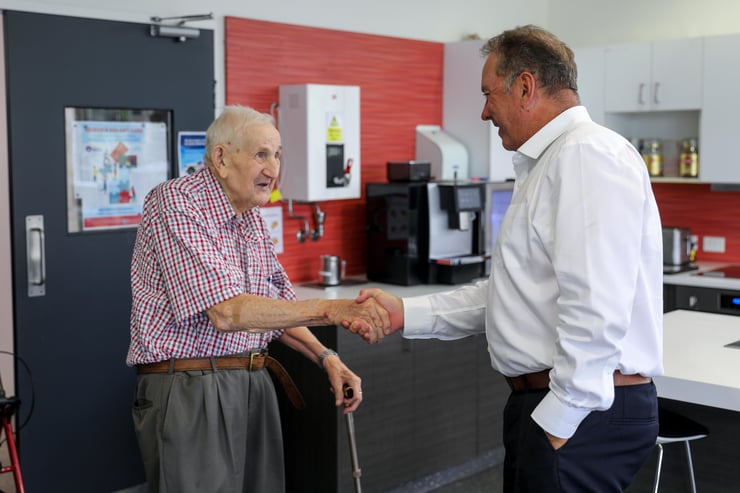More than 200,000 lives have been saved on Australia’s beaches and around the world due to the rubber duck, an Aussie innovation used by surf lifesavers in up to 50 countries.
And Ken Brown, now 91, of Killarney Heights, was a key player in developing this Inflatable Rescue Boat (IRB) and placing it in the hands of surf clubs everywhere.
The story of how Ken sourced French-made Zodiaks and modified them for pounding surf conditions in the early 1970s has been chronicled in a biography written by volunteer Bruce Stevenson as part of HammondCare’s Life Stories program.
The rubber duck revolutionised surf lifesaving forever - superseding the old line-and-reel system and the row boats previously used by Sydney life savers.
Ken said: “It became obvious that the inflatable rescue boat was a better way to go. You can’t bloody sink an inflatable boat.”
HammondCare General Manager Health and Palliative Care Felicity Burns said the Life Stories program recognised that the personal histories of older Australians are a priceless resource that can and should be recorded.
“Everyone has a story to tell about the impact they have had on those around them and the communities where they live,” he said.
“For some time, Life Stories has been an important part of our broader care for palliative care patients.”
“HammondCare wants as many of its patients, residents and clients to have the opportunity to pass on their stories, memories and messages for the benefit of their children, grandchildren and great grandchildren.”
Ken, a HammondCare palliative care patient, was formally recognised for his contribution to Surf Lifesaving NSW at ceremony in February this year where his contribution to surf safety was acknowledged by Chief Operating Officer Phil Ayres.
Born in 1932, Ken started his career as a milliner before going into the inflatable boats business with Zodiac. He married Dianne in 1963.
The need for inflatable surf lifesaving boats emerged when Warren Mitchell, a young lifesaver at Avalon Beach on Sydney’s Northern Beaches, witnessed a terrible drowning incident at Cornwall while working as a lifeguard in the UK.
Warren thought inflatable boats may be the solution. In December 1969, he used a Dunlop inflatable boat to rescue eight people from a rip at Avalon Beach. But the design wasn’t perfect.
In a short time, Ken’s Zodiac -- 3.8 metres long and able to hold a 25hp Johnson outboard -- was developed with Harry Brown of North Cronulla Surf Life Saving Club. Central to the design was upgrading the original French Zodiac fabric.
“We worked out the French rubber could not cope with the Australian UV. So, we found more durable fabric in Japan,” Ken said.
Pressure release valves to protect the IRBs from damage as internal air expands under the blazing Australian summer sun were part of the design as were petrol tanks able to hold 19 litres.

In 1987, Ken’s ingenious IRB – the red inflatable design is still a mainstay on many beaches – were recognised with an Australian Design Award.
For more than 30 years, Ken had a team making about one IRB a week, later manufacturing them under the brand KBM. KBM later developed bigger variants for the for the Australian Navy.
To offer a Life Story to even more people, HammondCare needs to recruit and train more volunteers ready to record and write the personal histories of those in its care.